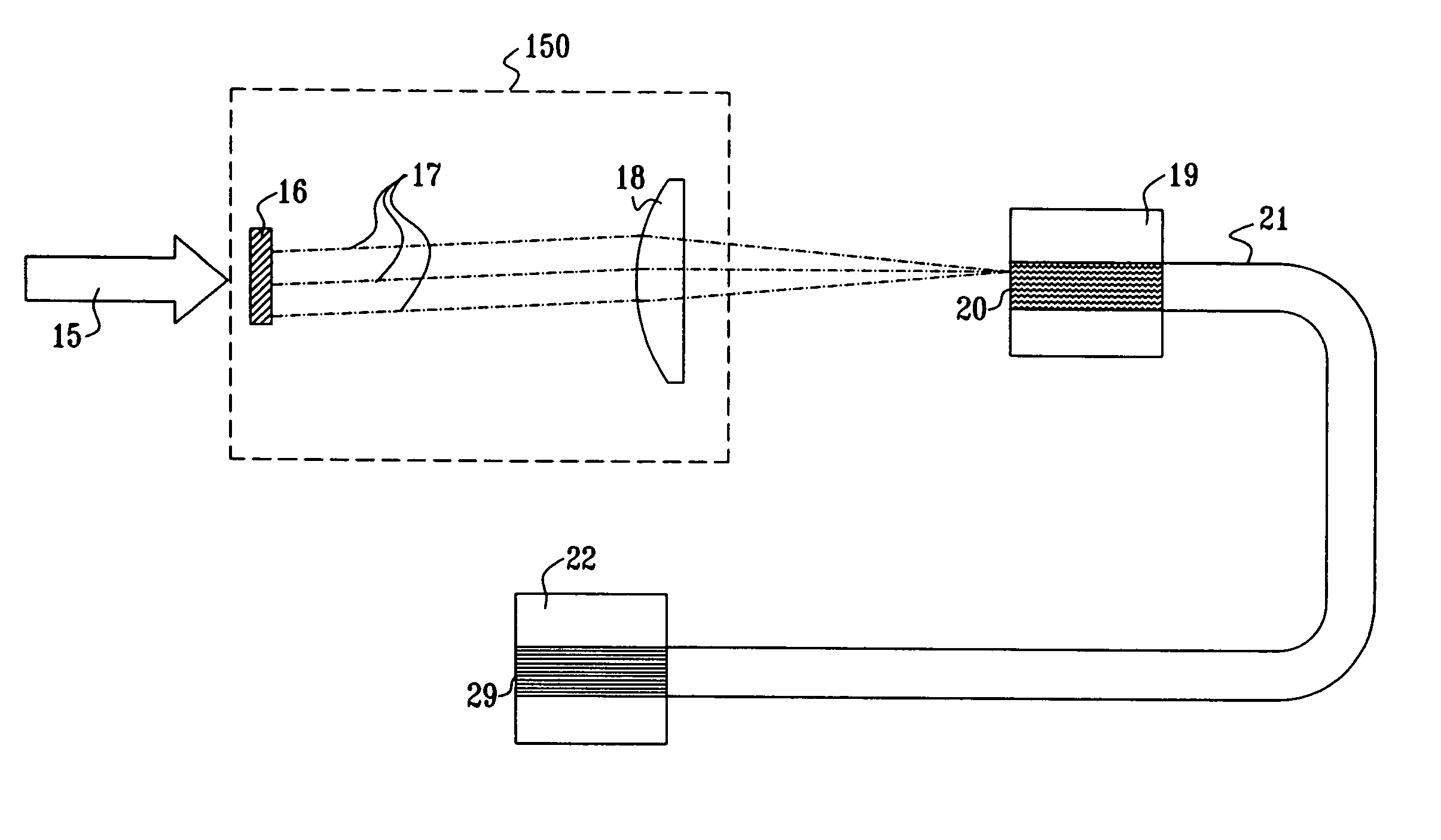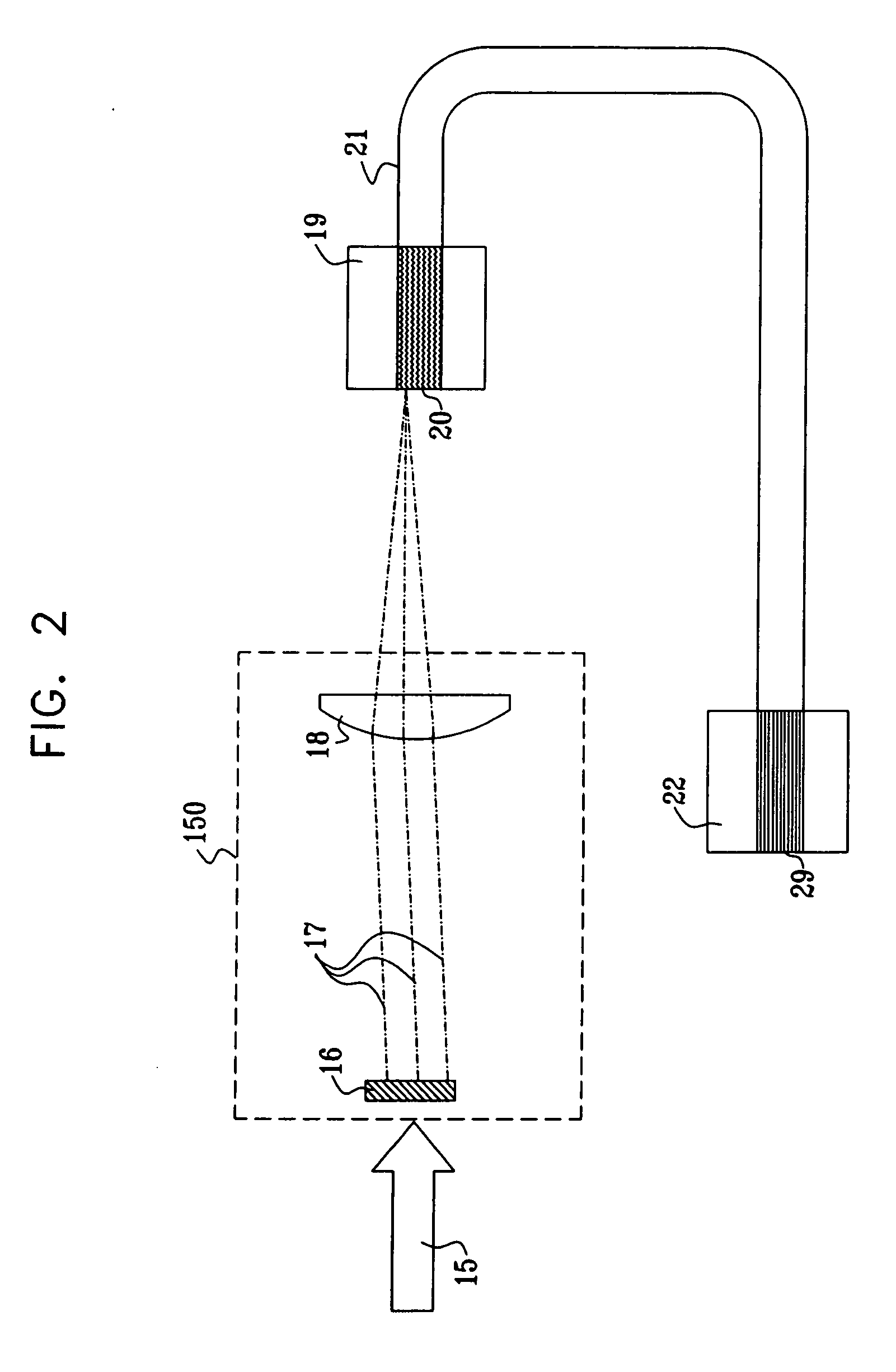Fiber optical illumination system
a fiber optic and illumination system technology, applied in the field of fiber optic illumination systems, can solve the problems of interference of light in the illumination optics, non-uniformity in the illumination field, and image artifacts, and achieve the effect of reducing transmission loss
- Summary
- Abstract
- Description
- Claims
- Application Information
AI Technical Summary
Benefits of technology
Problems solved by technology
Method used
Image
Examples
Embodiment Construction
[0032] Reference is now made to FIG. 1, which is an overall schematic side view of the complete illumination system of the defect detection apparatus, according to one preferred embodiment of the present invention. According to different preferred methods of operation, three alternative modes of illumination are provided: Bright Field (BF), Side-illuminated Dark Field (DF) and Orthogonal or Obscured Reflectance Dark Field (ODF). Each mode of illumination is used to detect different types of defects in different production process steps. For example in order to detect an embedded defect in a transparent layer, such as silicon oxide, BF illumination is preferred. In order to detect a small particle on a surface, DF illumination generally yields better results.
[0033] In bright field illumination in general, the illumination is incident on the sample through the same objective lens as is used for viewing the sample. Reference is now made to FIG. 1, which shows a bright field illuminati...
PUM
| Property | Measurement | Unit |
|---|---|---|
| coherence length | aaaaa | aaaaa |
| coherence length | aaaaa | aaaaa |
| coherence length | aaaaa | aaaaa |
Abstract
Description
Claims
Application Information
 Login to View More
Login to View More - R&D
- Intellectual Property
- Life Sciences
- Materials
- Tech Scout
- Unparalleled Data Quality
- Higher Quality Content
- 60% Fewer Hallucinations
Browse by: Latest US Patents, China's latest patents, Technical Efficacy Thesaurus, Application Domain, Technology Topic, Popular Technical Reports.
© 2025 PatSnap. All rights reserved.Legal|Privacy policy|Modern Slavery Act Transparency Statement|Sitemap|About US| Contact US: help@patsnap.com



